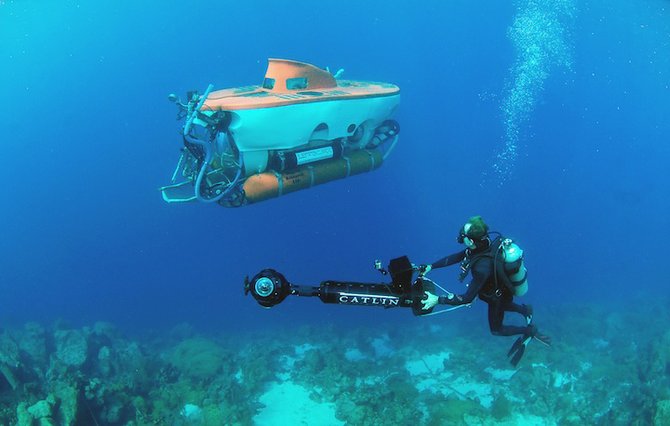THE Bahamas has been included in the expansion of a study on coral reefs under a new campaign by the Catlin Group.
The programme – which will significantly widen opportunities for ocean, coral and climate scientists to understand the changes that are occurring within the region – starts in Belize and moves on to Mexico, Bermuda, Anguilla, St Vincent, Guadeloupe, Turks and Caicos and the Bahamas.
Coral reefs in the Caribbean, like elsewhere, are under growing environmental stress. Being highly sensitive to environmental change, corals are considered the “canary in the coal mine” when it comes to impacts of climate change and ocean acidification. Exploitation, pollution, warming waters and increased storms linked with climate change has caused the massive loss of corals across the Caribbean Sea over the last 50 years.
Losing coral reefs in this fashion has long-term implications for Caribbean economies given their dependence on coral reefs and other marine ecosystems for goods, services and economic welfare.
According to the World Resources Institute, the value of shoreline protection services provided by Caribbean reefs is between $700 million and $2.2 billion per year. Within the next 50 years, continuing coral degradation and death could lead to losses totalling $140 million to $420 million annually.
“We are committed to understanding the future risks posed by climate change,” said Stephen Catlin, Chief Executive of sponsor Catlin Group Limited.
“It is not only important that scientists have access to this valuable data, but companies such as ours must understand the impact that significant changes to our environment will have on local economies.”
Coral reefs globally are in an unprecedented state of decline due to pollution, overfishing and climate change.
The National Oceanic and Atmospheric Administration (NOAA) predict increasing frequency and severity of mass bleaching events over the coming years. As the Catlin Seaview Survey embarks on a race against time to survey the coral reefs of the world, the Caribbean serves as an ideal launching point to take the campaign global because of the stress already experienced by its reefs.
“The Caribbean was chosen to launch the global mission because it is at the frontline of risk. Over the last 50 years, 80 percent of the corals in many places in the Caribbean have disappeared because of coastal development and pollution. They now are also threatened by invasive species, climate change and ocean acidification – it’s the perfect storm,” said Richard Vevers, Project Director for the Catlin Seaview Survey.
It is expected the state of the Caribbean reefs will provide insights into the future prospects for coral reefs in other regions of the world. Specifically, the new survey will focus on four major scientific goals:
Change detection – creating a Caribbean-wide ecological baseline: Accurate measurements of the current state of the coral reefs in the Caribbean are crucial to support timely decisions about their management.
Understand stress within the Caribbean – when, where and how much?: The Catlin Seaview Survey team will use direct measurements as well as information from NOAA and NASA satellite systems to understand how patterns in the health of coral reefs (eg coral cover, reef complexity) are influenced by local and global stressors such as changes in sea temperature, coastal pollution, fishing intensity, and exposure to wave stress and storms. This will fill in critical gaps in our understanding of why coral reefs have been in decline over the past 50 years.
Understanding climate change vulnerability: Develop deeper insights into mesophotic (deep-water) coral reef communities: The Catlin Seaview Survey’s work during 2012 on the Great Barrier Reef has revealed that mesophotic coral reefs may play an essential role in regenerating shallow water reef systems.
Produce new tools for understanding changes in tropical reef systems: Rapid, semi-automated and rigorous surveys of coral reefs are essential for developing an understanding of the rates of change, vulnerability and priorities for management intervention. To aid in the Survey’s campaign, a new camera has been developed; the SVII-S is a lighter-weight version of the main SVII camera that can be operated by a single diver, allowing dive team members to cover extra survey areas





Comments
Use the comment form below to begin a discussion about this content.
Sign in to comment
Or login with:
OpenID